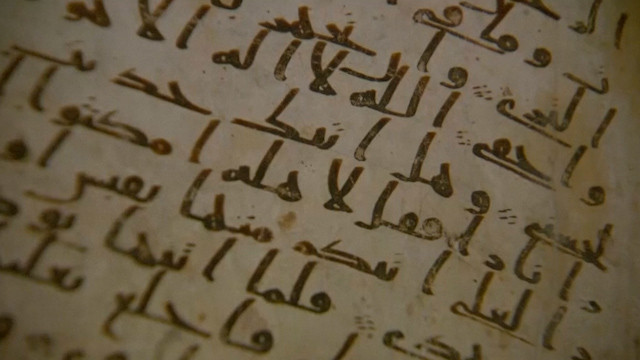Birmingham Quran may have been written when Prophet Muhammad was alive

Fragments of an ancient Quran found at the University of Birmingham in July this year indicate that it may have belonged to Hazarath Abu Bakr Siddique, one of the world's first Muslims and a close companion of Prophet Muhammad. Some historians say this version of the Quran could very well have been written when the prophet was still alive.
"I believe this is the Koran of Abu Bakr," said Jamal bin Huwareib, managing director of UAE's Mohammed bin Rashid Al Maktoum Foundation for Islamic studies, speaking to BBC News. "It's the most important discovery ever for the Muslim world."
The manuscript is written in ink on parchment, using a monumental Arabic Hijazi script that is still legible.
Abu Bakr, a friend and senior advisor to the prophet, became the first Muslim caliph in 632AD, ruling for 27 months until his death in 634AD. Sunnis consider him to be the greatest companion of Prophet Muhammad.
Alba Fedeli, the researcher who first identified the manuscript in Birmingham said that given its age and style, fragments found in Birmingham and some ancient parchment leaves held at Bibliotheque Nationale de France (National Library of France) in Paris could be from the same Quran. The leaves are believed to be from Egypt's oldest mosque, the Amr ibn al-As in Fustat, founded in 642AD.
Francois Deroche, a historian specialising in the Quran and academic at the College de France confirmed that the pages in Paris and the fragments from Birmingham are similar.
Dates questioned
Radiocarbon dating carried out in July found the Birmingham fragments to be at least 1,370-years-old, raising the possibility that it could be the oldest existing copy of the Islamic holy book. David Thomas, Birmingham University's professor of Christianity and Islam said, "The person who actually wrote it could well have known the Prophet Muhammad."
The view has been questioned by some who claim the date of the writing may vary as radiocarbon dating analysed only the animal skin on which the words were written. It is possible that the material was made long before it was written on.
Mustafa Shah, of the Islamic studies department at the School of Oriental and African Studies in London said, the "graphical evidence" – such as how the verses are separated and the grammatical marks – indicate it is from a later date. Professor Deroche of the College De France stated he has "reservations" about radiocarbon dating and that there have been instances where manuscripts with known dates have been tested and the results have proved them to be incorrect.
Oxford University's Radiocarbon Accelerator Unit, which dated the parchment, insisted its findings are correct. In July it put the range of dates between 568AD and 645AD. Researcher David Chivall told the BBC: "We're as confident as we can be that the dates are accurate." He said the accuracy of dating scripts has improved in recent years, with a much more reliable approach to removing contamination from samples. The overall range is accurate to a probability of 95%, Chivall said.
Although the Quran was compiled entirely by 650AD, some passages and portions may have existed beforehand. It is widely believed that the prophet received the revelations that form the Quran between 610AD and 632AD.
© Copyright IBTimes 2025. All rights reserved.





















